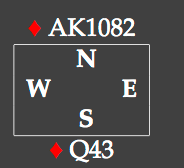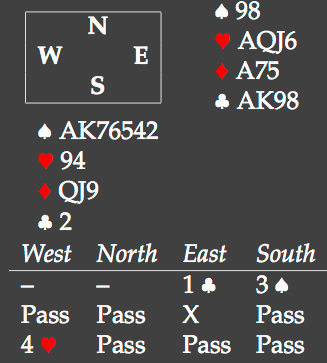I have a couple of days off between two jobs. Time to literally clean up, at least, for the first time in about 10 years, I went through all the stuff in my study and tossed out things I had not touched when we moved in. Some bridge stuff came up in the process too.
First, Maarten Schollaardt has also started a blog with, so-far, material well worth reading. Maarten is one of the coaches of the Dutch-21 team as well as a good player, IIRC, he won silver in the 2004 Olympiad. The URL of the site is http://www.echtlerenbridgen.nl.
Next, more than a year ago, I suggested to use apps on smartphones as a replacement for the well known bridgemates. The idea was simple, dedicated hardware like the bridgemate is expensive (order 75 euro/table) and will only be used for a few sessions week. On the other hand, most players have a smartphone these days (well, at least 1 out of 4 at a table) and a simple app can offer all the functionality a bridgemate has. The costs for that are minimal, as people already have the hardware in their pocket. I never followed up on the idea, but I was pleased to see that a Danish firm has actually implemented it. The URL of their site is http://www.dupligo.com. Note that I’m in no way involved in this effort. (And in case you think I just passed up the chance to become rich and famous, don’t worry, I did look at the business side of things and this is not a way to become rich).
Then, I’m currently taking the course to become a bridge teacher. Part of the course are exercises to explain simple play problems at a level that beginners can understand. The hands are given by authors of the course and supposed to be really simple. To compose those hands, is actually harder than you think. Take this diamond position for example. You are in a NT-contract and have to play the suit for at least 4 tricks. Entries are not a problem but you are not allowed to lose the lead.
You are in a NT-contract and have to play the suit for at least 4 tricks. Entries are not a problem but you are not allowed to lose the lead.
The official solution is to cash the ♦Q and cross to the ♦A. If RHO shows out, you have a marked finesse against the ♦J. Correct?
For teaching this to beginners, it looks right: start with the honnors from short side. However, consider what happens if LHO contributes the 9 to the first trick. If RHO started with ♦J765, playing the ♦A first, allows you to run the ♦10 on the way back. Of course, LHO can give you a losing option by playing the ♦9 from ♦J9(xxx). And if LHO contributes small to the first trick, you can play small to the ♦Q and be in exactly the same position as before. Is there any way you can figure this out? Not when you look at the suit in isolation, but playing a few tricks in side suits might help. Of course, this is way to complex for a beginners’ course, showing once again that it is hard to get these things right.
Finally, this defensive problem. Partner leads the QJ of spades and switches to a trump. Declarer wins, draws a second round and cashes the ♦K and you contribute the ♦9. Next declarer plays 2 top clubs. So, where is the problem?
Partner leads the QJ of spades and switches to a trump. Declarer wins, draws a second round and cashes the ♦K and you contribute the ♦9. Next declarer plays 2 top clubs. So, where is the problem?
Well, you have just missed it… You should have dropped an honnor when declarer played the ♦K. Declarer now plays ♦A and a ♦, endplaying you for his 10th trick when declarer started with a 2-5-3-3 shape.
